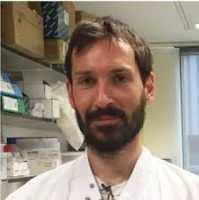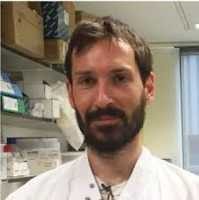
23 Jul Yin Yang 1 Regulatory Protein May Help Breast Cancer Evade Treatment
MedicalResearch.com Interview with:
Luca Magnani, Ph.D
CRUK Fellow/Senior Research Fellow
Department of Surgery and Cancer
Imperial Centre for Translational and Experimental Medicine
Room 140 1st floor ICTEM building
Imperial College Hammersmith
London, UK
MedicalResearch.com: What is the background for this study? Would you briefly explain what is meant by the Yin Yang1 molecule?
Response: This study was designed to investigate the evidence of non-genetic mechanisms that could contribute to breast cancer biology. Specifically, we developed a map of regulatory regions from luminal breast cancer patients. Regulatory regions are pieces of DNA that are not transcribed into protein-coding genes but they provide information about where and how much each gene should be activated.
It is worth highlighting that cancer is not only the consequence of gene mutations but also the result of the wrong genes expressed at the wrong time. To catalogue regulatory regions we looked for specific modifications that are strongly associated with their activity (epigenetic modifications). Doing so we developed the first extensive catalogue of non-coding DNA regions that might play an essential role in regulating how breast cancer cell behaves. Regulatory regions do their job by interacting with specific molecules called transcription factors. These molecules can read the information stored in these regulatory regions and contribute to regulate gene expression. Yin Yang 1 is one of such molecules and was previously thought as a ambiguous player capable of activating or repressing gene activity.
MedicalResearch.com: What are the main findings?
Response: Focusing on the most critical set of regulatory regions from our map we decipher their code to find that the molecule Yin Yang 1 molecule might be a common reader of these regions. This was interesting because it was thought that another molecule called Estrogen Receptor, was the main reader of these regions in luminal breast cancer patients.
However we found that Yin Yang 1 and the estrogen receptor interact in a subset of critical regulatory regions. Our current interpretation of the data is that these two molecules help each other to increase gene expression. Another set of findings came by comparing untreated, newly diagnosed cancers with treated advanced cancers. We unveiled a set of commonalities in how these regulatory regions behave in the two sets suggesting that while tumors evolve, in addition to accumulating more mutations, they might also switch on and off some of these regulatory regions to change how cancer cells behave. This was a first glimpse into a potentially exciting avenue of research as tumor evolution is currently considered only as a genetic problem, meaning that tumors are thought to evolve only by natural darwinian selection. Our data suggest that tumors might be more plastic that previously thought and cells might change behaviour using non-genetic mechanisms. These interesting hypotheses will have to be investigated in depth before we can be sure of anything though.
MedicalResearch.com: What should readers take away from your report?
Response: I believe our report, as many other, should teach us that there is still a lot to learn about how cancers behave. Especially now, with our ability of bringing some of the most innovative technologies directly in clinical samples, we are discovering more and more cancer specific biology. In this particular case we have shown that the non-coding DNA might play a central role in breast cancer biology, something that was not entirely appreciated so far.
MedicalResearch.com: What recommendations do you have for future research as a result of this work?
Response: I am a strong believer in team-science. These data were be obtained only as a consequence of efficient collaborations between clinicians, biologists and computational scientists. In the future there will be more and more integration between these branches. This means that eventually patients will be re-biopsied when algorithms could predict that the tumor might have changed sufficiently. Also, we need to keep an open mind about cancer specific biology. We know that cancer is a complex disease, but frequently we end up over-simplifying the models. Only once we have really explored the entire cancer play-book we will understand its rules.
MedicalResearch.com: Is there anything else you would like to add?
Response: I just want to thank all the collaborators and scientists that made this project possible. It was hard work but I believe it was very gratifying and eye-opening. And as usual, it has left us with more and more questions to ask.
Citation:
Article | Published:
Darren K. Patten, Giacomo Corleone, Balázs Győrffy, Ylenia Perone, Neil Slaven, Iros Barozzi, Edina Erdős, Alina Saiakhova, Kate Goddard, Andrea Vingiani, Sami Shousha, Lőrinc Sándor Pongor, Dimitri J. Hadjiminas, Gaia Schiavon, Peter Barry, Carlo Palmieri, Raul C. Coombes, Peter Scacheri, Giancarlo Pruneri & Luca Magnani
Nature Medicine (2018)
[wysija_form id=”3″]
[last-modified]
The information on MedicalResearch.com is provided for educational purposes only, and is in no way intended to diagnose, cure, or treat any medical or other condition. Always seek the advice of your physician or other qualified health and ask your doctor any questions you may have regarding a medical condition. In addition to all other limitations and disclaimers in this agreement, service provider and its third party providers disclaim any liability or loss in connection with the content provided on this website.
Last Updated on July 23, 2018 by Marie Benz MD FAAD

